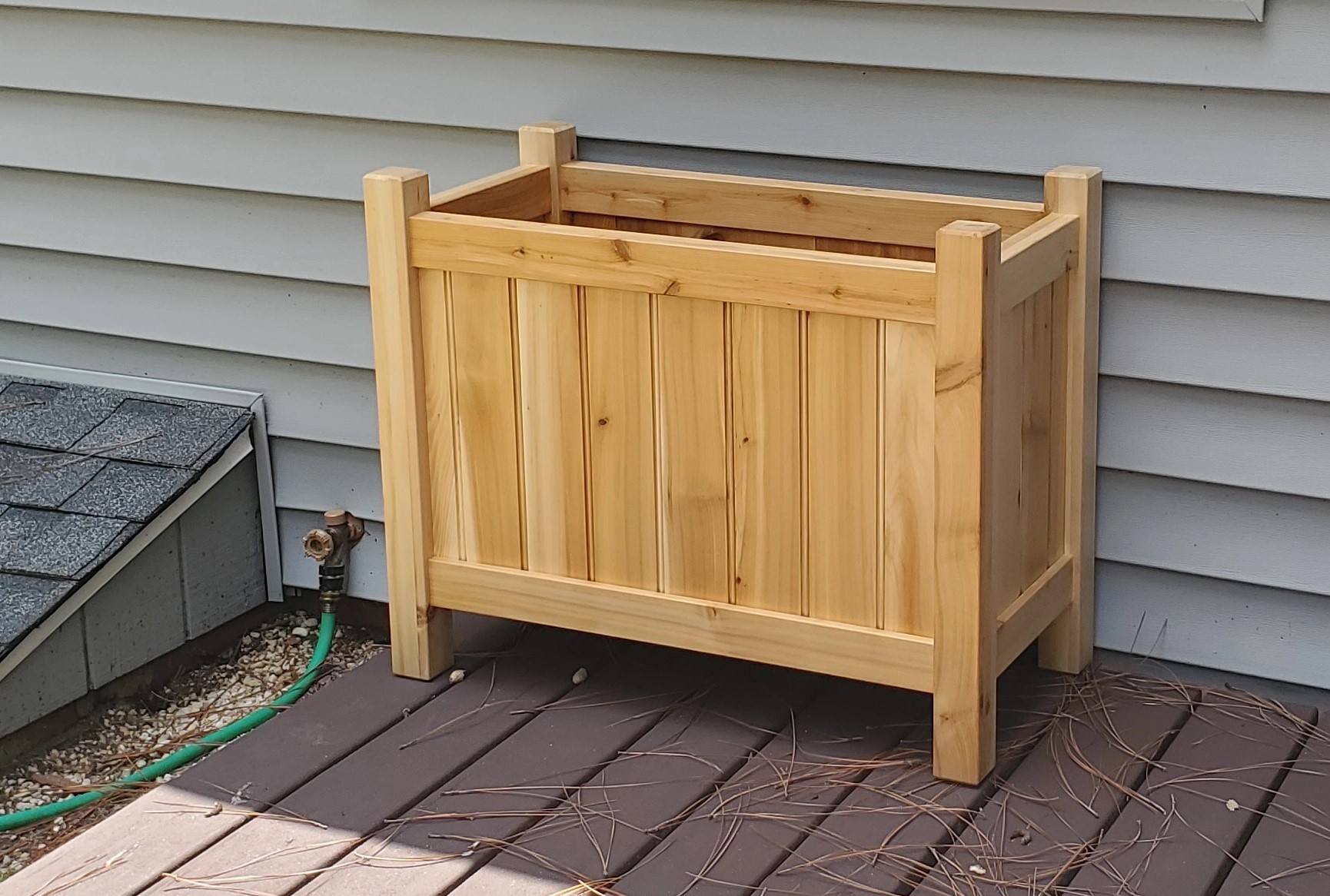I built this table for my sister-in-law back in 2016. She had just moved into her first home and asked if I would could maybe build a small farmhouse style table.
At this point I was relatively new to the hobby and had never built a proper piece of furniture that would function as a center piece for a room. She also did not have much money to spend so I came up with a plan to use some old barn wood I had scrounged up for the legs and construction lumber for the top.

There is a lot of internet hate out there for construction lumber projects, but I think if done right they can be an affordable option for folks. It’s been 7 years now and this still sits in her dining room getting daily use. It has zero cupping, or wobble, and has remained as sturdy as the day I made it.
Being pine it is very soft wood and so it has its share of dings and scratches, but because it was made to look distressed from the beginning that just adds to it.
I picked the straightest and cleanest boards I could get from the hardware store. Focusing on 26 and 210 stock.
The first challenge working with construction lumber that I needed to overcome was moisture. It is kiln dried but still not to the level you’d get with higher quality lumber.I started by stacking the wood in my humidity controlled garage and letting it sit for about a month.

While that was drying I worked on the barnwood legs. I had two salvaged boards and came up with a design that used most of it

I used a wire brush and water to clean up the grime

Skipping ahead in the process a bit since I didn’t do a great job taking pictures. For the top I ripped down the thicker boards, discarding the center part of the 2*10s to try and get rid of the tension caused by the center rings. I was worried this would lead to cupping. For each board I rotated the grain up and down so any cupping that did occur on an individual board level would hopefully off set. I used biscuits to help with alignment during the glue up

Breadboard ends are floating to allow for expansion and contracting of the top. I figured maybe this would be a failure point over time and someone leaning on the edges would break one off, but so far so good. The other issue here is that I made the tennon go all the way to the ends of the breadboard, which doesn’t hurt anything but over time as the wood has shrunk it has left 1/8 gap on the ends that could have otherwise been hidden.


Testing out stain and destressing combinations

Adding prestain conditioner to help with the blotchiness associated with staining pine. You can see that issue with the through tennon I mentioned above. It was flush here but has since retracted a bit

Stained

Here you can see the solution I came up with for attaching the top to allow for expansion but keep it flat. There is also a center beam they used lag screws. Since that is only in the middle I don’t need to worry about it pulling itself apart. This picture was several years later so you can see the shrinkage. It is otherwise flat and stable though. Ideally I would have had extra barn wood to help with the cross beams and more closely match the legs but unfortunately I did not


The top was then finished with a Danish oil and waxed


I’d like to apply to be your sister-in-law please.
What a wonderful table, and I admire the amount of care and thought you put in to the construction.
Haha thanks
Looks great, thanks for the write up!
Beautiful table, you should be proud!
Looks great, thanks for the write up!



